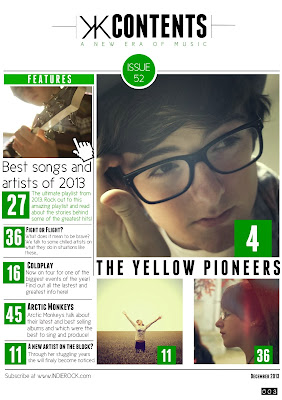
This is the last question of my evaluation. To start off with, my first front cover for a school magazine is obviously not as good as my final product. This is because i was only using pixlr at the time and hadn't developed my skills enough at the beginning of the year. Although my preliminary task has a mid shot, logo, title, snippets of information and a colour scheme, it isn't as full as my magazine front cover now. The model in my preliminary task is off to the side therefore making her look less important where as my model in my music magazine is in the middle and using the rule of thirds correctly to what i wished to portray, which was to make him come across as an important figure.
What I've learnt during the development of my music front cover is how to use photoshop, how to create a logo, spacing, different colours of font, creating a slogan, editing the colour and positioning of the image and adding items over the top such as stickers.
I took my original knowledge of singling out one colour in the image but then developed it so I changed the colour as well as singling it out. To do this I singled out the colour and then changed the hue of it to match the colour scheme I wanted. I also learnt to use the 'doodle' application on pixlr to make the background completely white. This helped me out later so the writing of the snippets aren't lost in the background.
I also used a varied amount of fronts on my music front cover, such as the tile, slogan, headings and snippets. I used thicker writing to draw the eye in where as the thinner writing is to add a little bit more information to make the reader want to take a look inside the magazine. This is something I didn't do in my preliminary task. With my school front cover magazine I only used 2 different fonts, this makes the front cover look boring, not as full and doesn't draw your eye as much as my music magazine front cover.
The image quality of the front covers have changed dramatically. With the school magazine front cover I used the school cameras and didn't take the image as big I needed or wanted. When using my own camera the images where taken on the RAW setting which allowed it to be the largest image possible whilst still excellent quality. In both images natural light was used. Being an amateur photographer, I knew in both front covers I needed natural light for the best images. When using non-natural lights on a not so sunny day, the image doesn't appear as nice and more editing had to be used to make it look natural.
Now looking back at the preliminary task I now realise how far I've come and how much my skills have developed.






